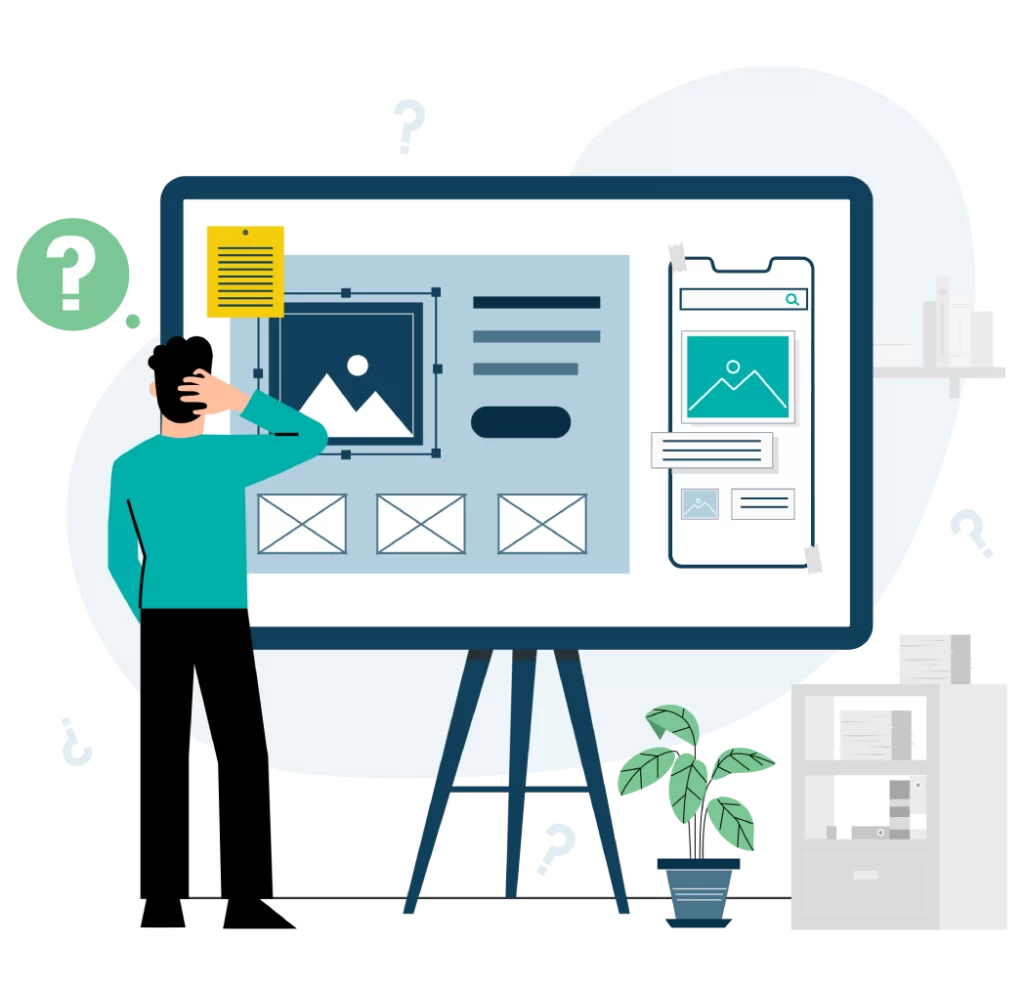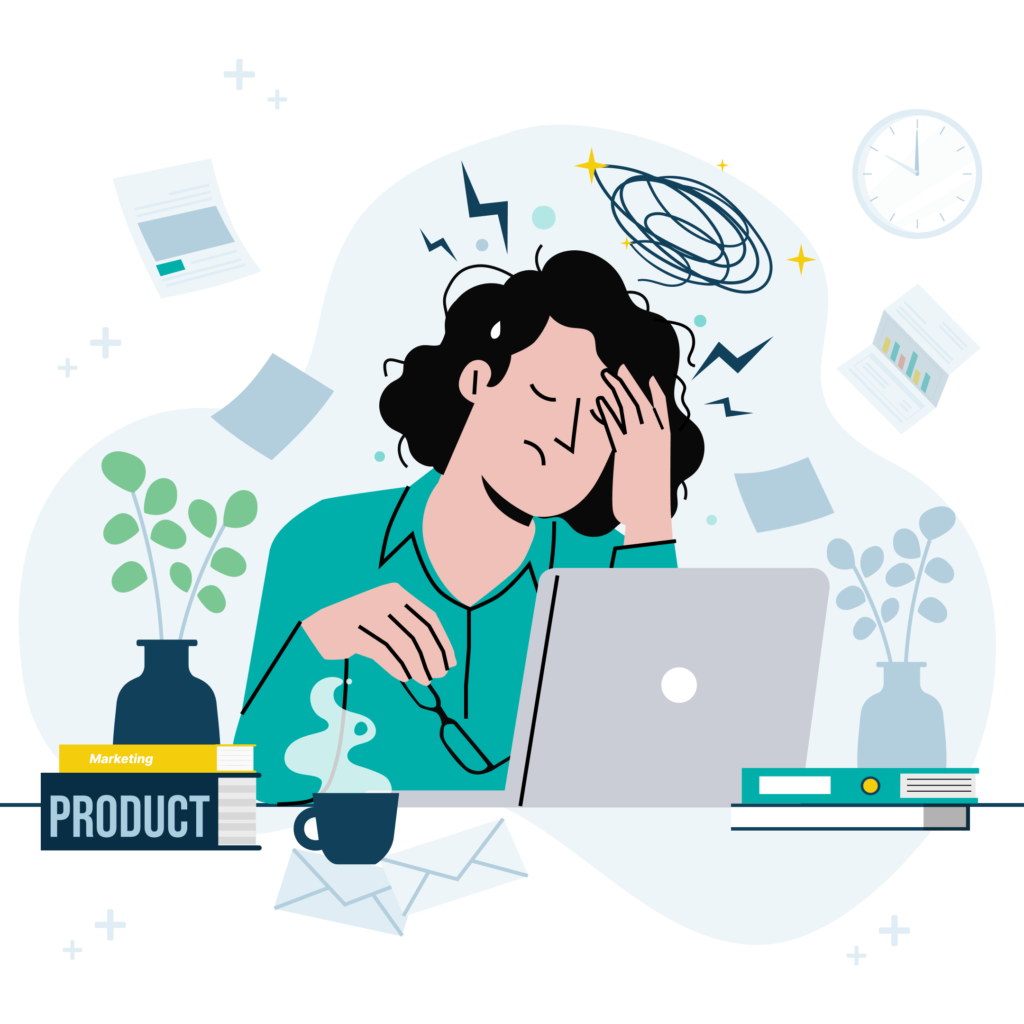Introduction to Digital Renewal
Maintaining an edge requires more than just setting up a digital presence; it demands continuous renewal. As technology evolves and user expectations grow, platforms, websites, and mobile apps must be refreshed to stay relevant and competitive.
Defining Digital Renewal
Explanation of Renewal in the Digital Context
Digital renewal refers to the comprehensive process of revitalizing a digital asset, such as a platform, website, or mobile app, to enhance its performance, functionality, and user experience. Unlike simple updates or tweaks, renewal is a holistic approach that involves overhauling various aspects of the digital entity. This might include redesigning the user interface, integrating new technologies, improving security measures, and optimizing content to meet current standards and user expectations.
Renewal is about keeping up with the pace of innovation. It is a proactive measure to ensure that digital assets are not just functional, but also engaging and efficient. By undertaking renewal, businesses can cater to evolving user needs, leverage new technologies, and maintain a competitive edge in their industry.
Distinction Between Renewal, Updates, and Redesigns
It is crucial to distinguish between renewal, updates, and redesigns, as these terms are often used interchangeably but represent different scopes of work.
- Updates: Updates are incremental improvements or additions to an existing digital asset. These can include security patches, minor feature enhancements, or content adjustments. Updates are typically smaller in scope and can be implemented without significant changes to the overall structure or design.
- Redesigns: Redesigns focus on altering the visual and structural design of a digital asset. This could involve changing the layout, color scheme, or user interface elements to improve aesthetics and usability. While redesigns can be significant, they often do not address deeper functional issues or integrate new technologies comprehensively.
- Renewal: Renewal encompasses both updates and redesigns but extends further to include a thorough re-evaluation and revamp of the entire digital asset. It involves strategic planning to address current and future needs, ensuring the asset remains relevant and competitive. Renewal can include redesign, technology upgrades, content refreshes, and improvements in performance and security.
The Evolution of Digital Platforms
Historical Perspective on Digital Platforms
To understand the importance of digital renewal, it is helpful to look back at the evolution of digital platforms. In the early days of the internet, digital platforms were basic and static, often serving as simple informational sites. As technology advanced, so did the complexity and capabilities of these platforms. The rise of e-commerce, social media, and mobile applications transformed digital platforms into dynamic, interactive spaces essential for business operations and user engagement.
Over the years, we’ve seen several shifts:
- Static to Dynamic Content: Initially, websites featured static content that rarely changed. With the advent of dynamic content, websites became more interactive, providing personalized experiences to users.
- Desktop to Mobile: The explosion of smartphone usage necessitated a shift from desktop-centric designs to mobile-friendly and responsive designs, ensuring accessibility on various devices.
- User Interaction: Platforms evolved from merely providing information to enabling user interaction through comments, shares, and real-time communication, making user experience a central focus.
- Integration of Advanced Technologies: Technologies such as artificial intelligence, machine learning, and big data analytics have been integrated into platforms to provide smarter, more efficient user experiences.
Importance of Adapting to Technological Advancements
Staying relevant in the digital landscape requires continuous adaptation to technological advancements. Here are key reasons why adapting is crucial:
- User Expectations: As technology evolves, so do user expectations. Users now expect fast, seamless, and personalized experiences. Failure to meet these expectations can lead to user frustration and loss of engagement.
- Security: Technological advancements bring new security threats. Regular renewal helps in implementing the latest security measures to protect user data and maintain trust.
- Performance: New technologies often offer improved performance, whether it’s faster load times, better responsiveness, or enhanced functionality. Keeping up with these advancements ensures that your digital assets perform optimally.
- Competitive Edge: Businesses that leverage the latest technologies can offer unique features and better user experiences, giving them a competitive advantage over those who lag behind.
Digital renewal is not a one-time task but an ongoing process. It involves understanding the historical context, differentiating between simple updates and comprehensive renewal, and staying abreast of technological advancements. By doing so, businesses can ensure that their digital platforms remain effective, secure, and competitive in the ever-evolving digital landscape.
The Necessity of Renewal
Staying relevant and competitive requires more than just periodic updates; it demands a comprehensive renewal strategy that addresses both technological advancements and evolving user needs. This article explores why renewal is crucial for digital platforms, focusing on maintaining competitiveness in a dynamic market and meeting user expectations.
Why Renewal is Crucial for Digital Platforms
Staying Competitive in a Dynamic Market
The digital world is in a constant state of flux. Technological innovations, changing user behaviors, and evolving market dynamics mean that businesses must be agile and proactive in maintaining their digital platforms.
Impact of Technological Changes on Competitiveness
Technological advancements drive significant changes in how businesses operate and compete. For instance, the rise of artificial intelligence (AI) and machine learning (ML) has transformed various industries by enabling personalized user experiences, automating tasks, and providing deeper insights through data analytics. Companies that adopt these technologies can offer superior products and services, gaining a competitive edge.
However, merely adopting new technology is not enough. Digital platforms must be regularly renewed to integrate these advancements effectively. This includes updating underlying infrastructure, enhancing security protocols, and ensuring compatibility with new devices and software. Failure to do so can result in outdated systems that are slow, insecure, and unable to meet modern demands.
Consider the case of Blockbuster. Once a dominant force in the video rental industry, Blockbuster failed to adapt to the digital streaming trend that Netflix embraced early on. Netflix’s continuous renewal and adaptation to new technologies allowed it to transform from a DVD rental service to a leading streaming platform, leaving Blockbuster in the dust.
Case Examples of Companies that Failed to Renew
Several high-profile companies serve as cautionary tales of what happens when digital renewal is neglected. One notable example is Kodak. Despite inventing the first digital camera, Kodak hesitated to transition fully to digital photography, fearing it would cannibalize its film business. Meanwhile, competitors like Canon and Nikon embraced digital technology, leading to Kodak’s eventual bankruptcy as digital photography became the norm.
Another example is Nokia. Once a leader in mobile phone technology, Nokia failed to recognize the shift towards smartphones and touch interfaces. While companies like Apple and Samsung invested heavily in renewing their platforms to create user-friendly smartphones, Nokia’s reluctance to innovate led to a significant loss in market share and relevance.
These examples highlight the critical importance of digital renewal. Companies that do not adapt to technological changes risk becoming obsolete, losing their competitive edge, and ultimately, their market position.
Meeting Evolving User Needs and Expectations
Beyond technological changes, user expectations are continually evolving. To remain relevant, digital platforms must not only keep up with technological advancements but also anticipate and meet the changing needs of their users.
User Behaviour Trends and Their Implications
User behavior in the digital age is influenced by several factors, including convenience, speed, personalization, and security. Modern users expect seamless experiences, instant access to information, and services tailored to their preferences. They are less tolerant of slow-loading pages, complicated interfaces, and generic content.
For example, the rise of mobile internet usage has led to a demand for mobile-optimized websites and apps. Users now prefer to perform tasks on the go, which means digital platforms must be responsive and offer a smooth mobile experience. Similarly, the growing concern over data privacy and security has made users more selective about the platforms they engage with, favoring those that prioritize and demonstrate robust security measures.
Benefits of Improved User Experience and Satisfaction
Renewing digital platforms to meet evolving user needs has several benefits. First and foremost, it enhances user experience, leading to higher satisfaction and engagement. A well-designed, intuitive platform encourages users to spend more time interacting with it, which can translate into increased loyalty and conversion rates.
For instance, Amazon continuously renews its website and app to improve user experience. From personalized recommendations powered by AI to streamlined checkout processes, Amazon ensures that users have a convenient and enjoyable shopping experience. This focus on renewal has helped Amazon maintain its position as a leading e-commerce platform.
Moreover, a renewed platform that addresses user needs can attract a broader audience. Positive user experiences lead to word-of-mouth referrals and positive reviews, further enhancing the platform’s reputation and reach. Additionally, satisfied users are more likely to return, reducing churn rates and fostering long-term relationships.
Digital renewal is not just a matter of keeping up with technological changes; it is about staying competitive and relevant in a dynamic market and meeting the ever-evolving needs of users. By continuously renewing their digital platforms, businesses can ensure they remain at the forefront of their industry, delivering superior experiences that drive satisfaction, loyalty, and growth.
Platforms, Websites, and Mobile Apps: Specific Considerations
Renewing digital platforms, websites, and mobile apps is essential to maintain relevance, improve user experience, and stay competitive. This article delves into specific renewal strategies for each type of digital asset, addressing common challenges and showcasing successful case studies to illustrate the benefits of comprehensive renewal initiatives.
Renewal Strategies for Platforms
Platform-specific Challenges and Solutions
Digital platforms, encompassing everything from e-commerce sites to social media networks, face unique challenges that can hinder performance and user satisfaction if not addressed promptly.
Common Issues Faced by Outdated Platforms
- Performance Degradation: Over time, platforms can become sluggish due to outdated technology stacks, leading to slow load times and poor user experience.
- Security Vulnerabilities: Older platforms may lack modern security features, making them susceptible to cyber-attacks and data breaches.
- Scalability Limitations: As user bases grow, platforms designed with outdated architectures may struggle to scale, causing disruptions and outages.
- User Interface Obsolescence: Design trends evolve, and platforms that do not update their interfaces may appear dated, deterring users accustomed to modern, sleek designs.
Strategic Approaches for Platform Renewal
- Technology Upgrades: Transitioning to newer, more efficient technologies can significantly enhance platform performance and security. This might involve adopting cloud-based solutions, utilizing microservices architecture, or integrating AI and machine learning for advanced functionalities.
- Regular Security Audits: Conducting frequent security assessments and implementing the latest security protocols can protect against vulnerabilities and build user trust.
- Scalability Enhancements: Designing platforms with scalability in mind, using technologies such as containerization and serverless computing, ensures they can handle increasing traffic without performance issues.
- User-Centric Redesigns: Updating the user interface to align with current design standards and usability best practices can improve user satisfaction and engagement. This includes responsive design for cross-device compatibility and intuitive navigation structures.
Case Study: Successful Platform Renewal
Detailed Examination of a Company’s Platform Renewal Journey
Consider the example of LinkedIn, a professional networking platform that underwent a significant renewal to enhance user experience and platform performance.
- Identifying the Need for Renewal: LinkedIn recognized that its platform was becoming slow and less responsive, impacting user engagement. The interface was also seen as outdated compared to newer social networks.
- Comprehensive Overhaul: LinkedIn implemented a complete rewrite of its frontend and backend systems. They adopted a mobile-first approach, improved the news feed algorithm, and enhanced the messaging system to be more interactive and real-time.
- Results: The renewal led to a faster, more responsive platform with a modern interface, resulting in increased user engagement, higher session durations, and improved user satisfaction. This renewal also positioned LinkedIn as a more competitive player in the social networking space.
Renewing Websites for Optimal Performance
The Role of Website Renewal in SEO and User Engagement
Websites serve as the digital front door for many businesses. Keeping them updated is crucial for both search engine optimization (SEO) and user engagement.
Impact on Search Engine Rankings and User Engagement
- SEO Benefits: Regularly renewing website content and structure can improve search engine rankings. Search engines favor websites that provide fresh, relevant content and adhere to the latest technical SEO standards.
- User Engagement: A well-maintained website with updated design and content is more likely to engage users, reducing bounce rates and increasing time spent on the site.
Technical SEO Improvements Through Renewal
- Site Speed Optimization: Enhancing site speed by optimizing images, leveraging browser caching, and using content delivery networks (CDNs) can significantly improve user experience and SEO rankings.
- Mobile Optimization: Ensuring that the website is fully responsive and provides an excellent mobile experience is crucial, as search engines prioritize mobile-friendly sites.
- Structured Data Implementation: Using structured data (schema markup) helps search engines understand the content better, leading to enhanced visibility in search results.
Case Study: Website Renewal Success
Example of a Website Revamp and Its Positive Outcomes
A prime example is the BBC’s renewal of its news website.
- Identifying the Need for Change: The BBC recognized that their website was slow and not optimized for mobile users, leading to a decline in user engagement.
- Comprehensive Redesign and Optimization: They implemented a mobile-first design, enhanced site speed, and incorporated structured data for better search engine indexing.
- Results: Post-renewal, the BBC website saw a significant increase in mobile traffic, faster load times, and improved user engagement metrics. The renewal also boosted their SEO performance, leading to higher visibility in search results.
The Importance of Mobile App Renewal
Enhancing User Experience and Functionality
Mobile apps need regular renewal to meet evolving user expectations and leverage new technologies.
User Expectations for Mobile Apps
- Speed and Performance: Users expect apps to load quickly and run smoothly, without crashes or delays.
- Intuitive Design: A user-friendly interface that is easy to navigate enhances user satisfaction and engagement.
- Regular Updates: Users prefer apps that regularly introduce new features and improvements, reflecting a commitment to continuous enhancement.
Features That Enhance User Experience in Renewed Apps
- Personalization: Integrating AI to provide personalized content and recommendations enhances user engagement.
- Enhanced Security: Implementing robust security measures, such as biometric authentication and encrypted communications, builds user trust.
- Offline Capabilities: Offering offline functionality allows users to access essential features without an internet connection, improving usability.
Case Study: Mobile App Renewal Success
Analysis of a Mobile App Renewal and Its Impact on User Retention
Take the example of the Starbucks mobile app renewal.
- Recognizing the Need for Renewal: Starbucks identified that their app was not performing optimally and lacked several features that users expected, such as mobile ordering and personalized recommendations.
- Strategic Renewal: Starbucks overhauled the app’s design, integrated mobile ordering and payment options, and introduced personalized offers based on user preferences.
- Outcome: The renewal resulted in a substantial increase in app usage and customer satisfaction. Users appreciated the convenience of mobile ordering and the personalized experience, leading to higher retention rates and increased sales.
Renewing digital platforms, websites, and mobile apps is essential for maintaining competitiveness, improving user experience, and leveraging new technologies. By addressing specific challenges and implementing strategic renewal initiatives, businesses can ensure their digital assets remain relevant, secure, and effective in meeting the needs of their users.
Consequences of Neglecting Renewal
Neglecting the renewal of digital platforms, websites, and mobile apps can lead to several detrimental consequences. This article explores the impact of outdated systems on user experience, security risks, and compliance issues.
To avoid these pitfalls, businesses must prioritize regular renewal and updates. By doing so, they can ensure their digital assets are secure, compliant, and capable of delivering an optimal user experience. This proactive approach not only enhances user satisfaction and engagement but also protects the business from potential security breaches and legal issues, ultimately supporting long-term success and growth in the digital landscape.
Impact of Outdated Systems on User Experience
User experience (UX) is a critical factor in the success of any digital platform. When systems are outdated, the user experience suffers significantly, leading to negative feedback and reduced engagement.
Negative User Feedback and Reduced Engagement
Common User Complaints About Outdated Systems
Outdated systems often fall short of meeting user expectations, leading to a variety of common complaints. Users might experience slow load times, which can be particularly frustrating in an era where speed is expected. Outdated interfaces that are not intuitive or visually appealing can also deter users from engaging with a platform. Additionally, features that do not function as intended or lack modern capabilities can cause frustration.
For example, users of an outdated e-commerce site might struggle with a cumbersome checkout process, leading to abandoned shopping carts. Similarly, a dated social media platform might lack the interactive features that users have come to expect, such as real-time notifications or seamless media sharing, resulting in lower user satisfaction and retention.
Metrics Showing Reduced Engagement and Conversion Rates
The impact of outdated systems on user engagement can be quantified through various metrics. Key performance indicators (KPIs) such as bounce rates, session duration, and conversion rates often reflect the negative effects of an outdated digital experience.
- Bounce Rate: An outdated website typically has a higher bounce rate, as users leave shortly after arriving due to poor user experience or slow loading times.
- Session Duration: Users spend less time on outdated platforms because they are not engaging or easy to navigate, leading to shorter session durations.
- Conversion Rate: E-commerce sites with outdated systems often see lower conversion rates, as the checkout process may be inefficient or insecure, deterring users from completing purchases.
For instance, if a website’s average session duration drops from three minutes to one minute after failing to update its interface and functionalities, it’s a clear indicator of reduced user engagement. Similarly, a drop in conversion rates from 2% to 1% can significantly impact revenue, emphasizing the financial implications of neglecting renewal.
Security Risks and Compliance Issues
Beyond user experience, outdated digital systems pose significant security risks and compliance challenges that can have severe consequences for businesses.
Increased Vulnerability to Security Threats
Outdated systems are prime targets for cyber-attacks. As technology evolves, so do the tactics of cybercriminals. Systems that are not regularly updated with the latest security patches and protocols are vulnerable to exploitation. Hackers can exploit known vulnerabilities in outdated software to gain unauthorized access, steal sensitive data, or deploy malware.
For example, an outdated content management system (CMS) may have unpatched vulnerabilities that cybercriminals can exploit to conduct data breaches. Such breaches can result in the loss of customer data, financial information, and intellectual property, causing both financial and reputational damage.
Legal and Compliance Risks of Outdated Digital Assets
In addition to increased security risks, outdated systems can also lead to legal and compliance issues. Regulatory frameworks like the General Data Protection Regulation (GDPR) in Europe and the California Consumer Privacy Act (CCPA) in the United States require businesses to implement stringent data protection measures.
Failing to renew and update digital systems can result in non-compliance with these regulations, leading to hefty fines and legal repercussions. For instance, if a business’s outdated system is breached and customer data is compromised, the company may face fines for not adequately protecting personal information as mandated by GDPR.
Moreover, outdated systems might not support the latest compliance features, such as secure data encryption or audit logs, further exacerbating the risk of regulatory violations. Businesses must ensure their digital assets are regularly updated to meet evolving legal standards and protect against compliance failures.
Strategic Approaches to Digital Renewal
Planning and executing a successful digital renewal strategy involves comprehensive assessments, regular audits, and the adoption of agile, user-centric development methodologies. By leveraging the right tools and continuously incorporating user feedback, businesses can ensure their digital platforms, websites, and mobile apps remain competitive, secure, and aligned with user expectations. This proactive approach not only enhances user satisfaction and engagement but also supports long-term business success in the ever-evolving digital landscape.
Planning and Executing a Renewal Strategy
Successfully renewing digital assets requires a well-thought-out strategy. This strategy should encompass a thorough understanding of current system performance and a clear roadmap for iterative improvements.
Comprehensive Assessment and Audits
The first step in any renewal strategy is to conduct regular assessments and audits of the existing digital assets. This helps identify areas needing improvement and sets a baseline for measuring progress.
Importance of Regular Audits and Performance Assessments
Regular audits are crucial for maintaining the health and performance of digital systems. They provide insights into various aspects of the platform, including user experience, security, and technical performance.
- User Experience: Audits help identify issues such as slow load times, navigation difficulties, and outdated interfaces that can negatively impact user satisfaction and engagement.
- Security: Regular security audits reveal vulnerabilities and gaps in protection that could be exploited by cybercriminals. This is essential for safeguarding user data and maintaining trust.
- Technical Performance: Performance assessments highlight areas where the system may be lagging, such as server response times, scalability issues, and compatibility with new technologies.
By identifying these issues early, businesses can take proactive steps to address them before they escalate into major problems.
Tools and Methods for Evaluating Current Systems
Several tools and methodologies can assist in evaluating the current state of digital assets:
- Google Analytics: Provides comprehensive data on user behavior, including session duration, bounce rates, and page load times, helping identify areas for improvement.
- Security Scanners: Tools like Nessus and Qualys can perform automated security scans to detect vulnerabilities in the system.
- Usability Testing: Conducting usability tests with real users can reveal pain points and areas where the user experience can be enhanced.
- Performance Monitoring Tools: Solutions like New Relic and GTmetrix offer insights into server performance, response times, and overall system health.
Using these tools, businesses can gather valuable data to inform their renewal strategies and ensure they address the most critical issues.
Implementing Agile and User-Centric Development
Once the assessment phase is complete, the next step is to implement agile and user-centric development methodologies. These approaches prioritize iterative improvements and continuous user feedback, ensuring that digital assets evolve in line with user needs and technological advancements.
Agile Methodologies for Iterative Improvements
Agile methodologies emphasize flexibility, collaboration, and iterative progress. Unlike traditional, linear development models, agile allows for ongoing enhancements and adjustments based on user feedback and changing requirements.
- Sprint Cycles: Agile development is organized into short, time-boxed iterations called sprints. Each sprint focuses on a set of tasks that contribute to the overall renewal goals, allowing teams to deliver incremental improvements regularly.
- Scrum Framework: A popular agile framework, Scrum involves roles such as Scrum Master and Product Owner, and practices like daily stand-ups and sprint reviews, which facilitate continuous communication and feedback.
- Kanban: Another agile approach, Kanban visualizes work in progress and helps manage workflow by limiting work in progress and focusing on continuous delivery.
By adopting agile methodologies, businesses can ensure that their digital renewal efforts are responsive and adaptable, enabling them to quickly address emerging issues and incorporate new features.
Incorporating User Feedback into the Renewal Process
User feedback is a vital component of successful digital renewal. Understanding user needs and preferences allows businesses to make informed decisions that enhance the overall user experience.
- User Surveys: Conducting regular surveys can provide direct insights into user satisfaction, pain points, and desired features.
- Beta Testing: Involving users in beta testing phases allows them to experience new features before full deployment and provide valuable feedback on usability and functionality.
- User Analytics: Analyzing user behavior through tools like heatmaps and session recordings can uncover areas where users struggle or drop off, guiding targeted improvements.
For example, if user analytics reveal that many users abandon the checkout process at a particular step, businesses can investigate and address specific issues, such as simplifying the form or improving load times, to enhance the user experience.
Conclusion: Understanding the Importance of Platform, Website, and Mobile App Renewal
The renewal of platforms, websites, and mobile apps is not merely a best practice but a necessity for businesses aiming to stay competitive and meet the dynamic needs of their users. Neglecting renewal can lead to a host of issues, including diminished user experience, security vulnerabilities, and compliance challenges.
Strategic renewal involves comprehensive assessments, regular audits, and the implementation of agile, user-centric development methodologies. These practices ensure that digital assets are continuously improved and aligned with current technological advancements and user expectations. By proactively addressing performance, security, and usability, businesses can enhance user satisfaction, foster engagement, and ultimately drive growth.
In summary, understanding the importance of digital renewal and implementing effective strategies can significantly impact a business’s success. It ensures that platforms, websites, and mobile apps remain relevant, secure, and user-friendly, fostering a positive user experience and maintaining a competitive edge in the market.
When it comes to achieving digital renewal and implementing effective strategies, partnering with the right software company is crucial. Softwareseni emerges as an ideal choice for businesses seeking comprehensive and innovative digital solutions. As a multinational software company, Softwareseni offers a diverse range of services including website development, mobile app development, and custom software solutions. With a strong focus on quality, innovation, and customer satisfaction, Softwareseni is dedicated to helping businesses thrive in the digital landscape.
About SoftwareSeni.
SoftwareSeni is software solutions with more than 10 years of expertise, with 200+ professional staff and more than 1200 projects delivered. SoftwareSeni empowers diverse industries – automotive, real estate, healthcare, education, F&B, hospitality, tourism, and more. We specialise in WordPress, Laravel, Node.js, React.js, NET. SoftwareSeni services include ecommerce website development, web app creation, mobile app development (Android & iOS), and developer team extension.
Why Choose SoftwareSeni?
1. Tailored Services to Suit Your Needs
We understand that every business has unique digital needs. With a range of customizable services, from Team Extension and Staff Augmentation to MVP Development, Custom Software Development, and Web, Mobile (Android & iOS) App, and E-commerce Development, we are ready to support your digital business transformation. Learn more about SoftwareSeni’s services
2. Solutions for Various Industries
We have extensive experience across various industries, including property, retail, automotive, media, healthcare, and more. Our diverse services enable us to be a trusted partner that can provide the right solutions for your industry needs. Learn more about SoftwareSeni’s solutions
3. Experienced Professional Team
With over 200 dedicated professional staff, we are ready to help you tackle every digital challenge. Our experience in managing over 1200 projects ensures that you get the best results from our team. Learn more about SoftwareSeni.
4. Trusted by Many Large Companies
Leading companies such as Astra Motor, Downsizing, RedBalloon, News.com.au, and many others have entrusted their digital transformation to us. Our experience in working with various large companies demonstrates our ability to deliver high-quality solutions. Learn more about SoftwareSeni’s portfolio
5. Commitment to Security and Quality
Security is our top priority. With ISO 27001 certification and being an official AWS Consulting Partner, we ensure that every project is developed to the highest security and quality standards. You can rest assured knowing that your digital systems are in good hands. Learn more about SoftwareSeni’s Commitment to Security
Join Us and Transform Your Business!
Don’t let your business fall behind in this digital era. Choose SoftwareSeni as your digital partner and enjoy services tailored to your needs, supported by a professional team, as well as reliable and secure solutions. Contact us today and start your digital journey confidently.












